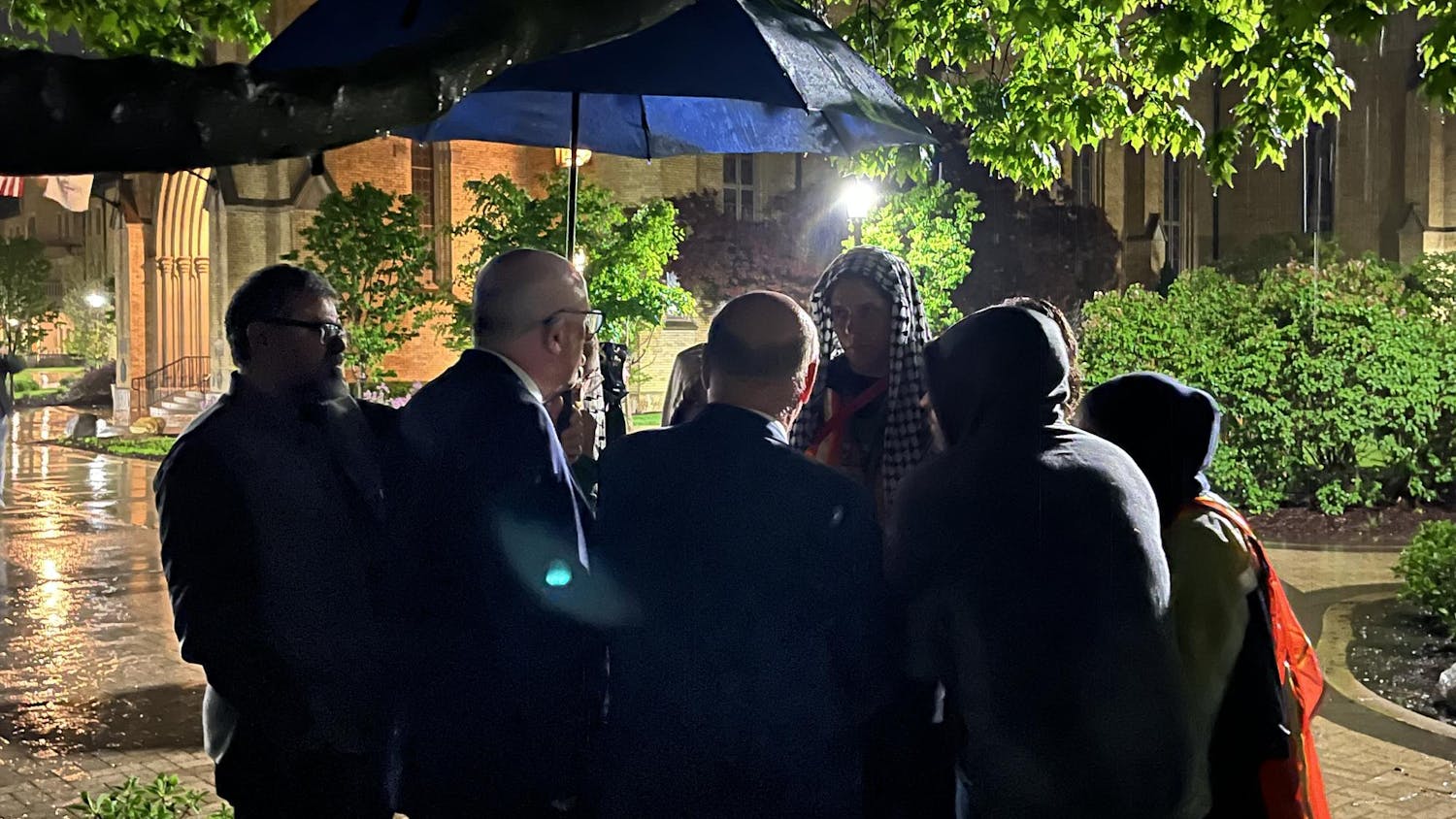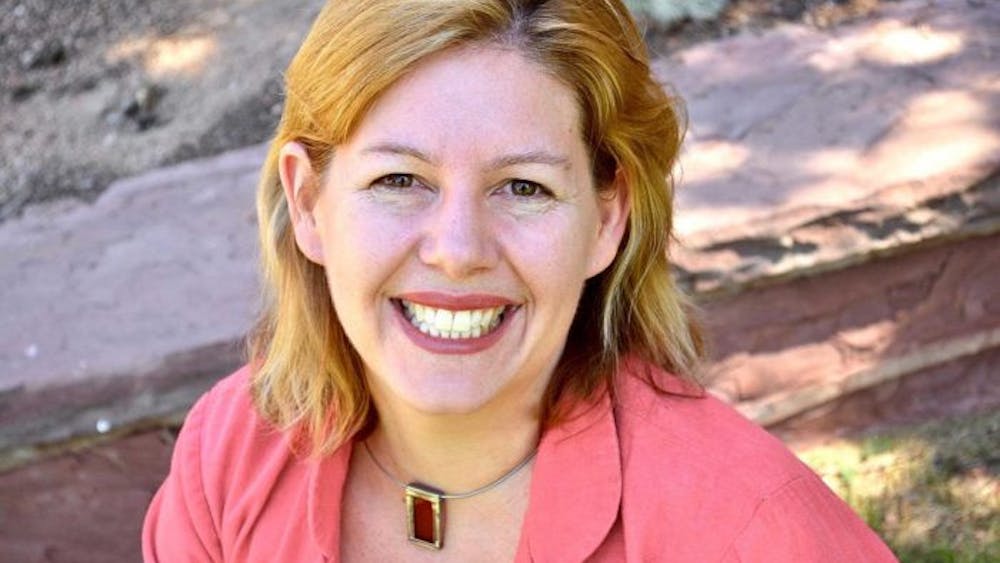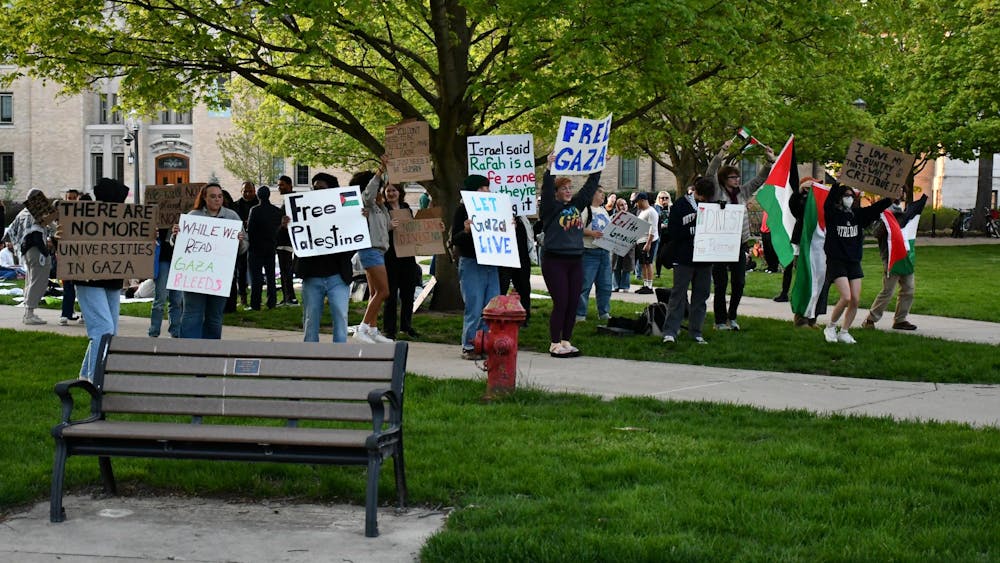The names are what first catch my attention. As we exult in these Easter days (as best we can with finals hovering over us), we immerse ourselves in the Gospel stories of the Resurrection. For all the spiritual fireworks that are about to erupt with the revelation of Jesus' rising from the dead, these well- known stories of our faith all begin with simple, single, precisely identified names — of a few women.
They come, not to get front-row seats for the fireworks, about which they know nothing, but in fear and love to pack Jesus' dead body with burial spices. The story of the Resurrection of Jesus Christ begins with simple names — people approaching a tomb tentatively, in darkness and fear.

The evangelist Mark begins, "When the Sabbath was over, Mary Magdalene, Mary the mother of James, and Salome brought spices so that they might anoint him."
Buried within this simple statement of fact are numerous, profoundly interesting questions. Given the violent revile with which the Jerusalem crowd had killed Jesus the day before, at what risk did these women expose themselves as his followers by bringing spices that morning? After the gathering of fellowship at the Thursday Passover meal, so filled with intimate exchanges of friendship and camaraderie, where were the 11 remaining apostles? With guards alerted that Jesus' body might be stolen by his disciples so as to claim a resurrection, what opposition must these women have faced, surely from armed guards, as they made their way alone and unarmed to Jesus' tomb that morning? What courage stirred in their hearts and moved their feet toward the tomb, while others ran away in fear?
Matthew: "After the Sabbath, as the first day of the week was dawning, Mary Magdalene and the other Mary came to see the tomb." What was it like for two women to make their way through the streets, unaccompanied in the dark hours of the morning, almost begging to be identified as sympathizers for a publically executed criminal? Indeed, they would be identified as sympathizers at best, co-conspirators more likely. And so, worthy too of execution or at least imprisonment and other tactics of intimidation.
Luke: "When Jesus' body was taken down from the cross, the women who had come from Galilee with him followed behind, and when they had seen the tomb and the way in which his body was laid in it, they returned and prepared spices and perfumed oils — Mary Magdalene, Joanna and Mary the mother of James." Luke says they followed Jesus' expired body from the time it was taken down from the cross, directly to his burial place. Moments before, authorities and the crowd taunted Jesus, daring him to fulfill his claims that he was the Son of God by coming down from the cross. Perhaps it is not hard to imagine what this same crowd asked of these women in the minutes after Jesus refused to come down, on their way to bury their failed Messiah. Luke does not record the taunts and curses that surely were thrown their way, like stones at a discovered adulteress. Luke, however, is clear about one detail: they followed, to see where their friend — failed Messiah though he may have been — was to be buried, that they might return and take care of him.
These are the beginnings of each of the Resurrection stories. Love. Human love. Love for a friend. Unconditional love, for — as far as they knew — their beloved's mission had utterly failed. Yet, at least for these disciples, they were not following an abstract mission. They were following a person, a person whom they loved and who had revealed Love to them. And so they kept following, with no apparent hesitation to face jeering crowds, armed guards, dark streets, the tomb of a publically humiliated criminal.
The heart of the Resurrection is the love of God for his Son Jesus, and through Jesus, for all of us. It is a love that is revealed on this Easter morning to be the strongest force in the universe — stronger even than the most inescapable power we know, the power of death. The Resurrection is, ultimately, about the love of God.

But isn't it noteworthy that the stories of the Resurrection all begin with human love? To whom would the Resurrection have been revealed, if no one had loved enough to go to the tomb? To make the intimidating, failure-confirming, dark journey to the grave? He loved us — yes, this would be confirmed in the fireworks that awaited at the rolled-away stone. This, surely, is our salvation. And yet, something else important, perhaps essential, is revealed to us at the Resurrection through these women who approach the tomb.
We love him.
Not an abstract love. A love for a real person we have come to know and believe in. Who has stared into our eyes and enkindled our hearts. Who has engendered in us … love.
John: "Mary of Magdala stayed outside the tomb weeping. And as she wept, she bent over into the tomb." Who bends over into death? One in whom the love for the person of Christ has been deeply planted, and who has the freedom and courage to let it direct one's actions. It is from this reality — that we love him — that the glory of the Resurrection rushes upon us and renews the face of the earth.
This week's Faithpoint is written by Fr. Lou DelFra, CSC of Campus Ministry Bible Studies and ACE chaplain. He can be reached at delfra.2@nd.edu
The views expressed in this column are those of the author and not necessarily those of The Observer.












